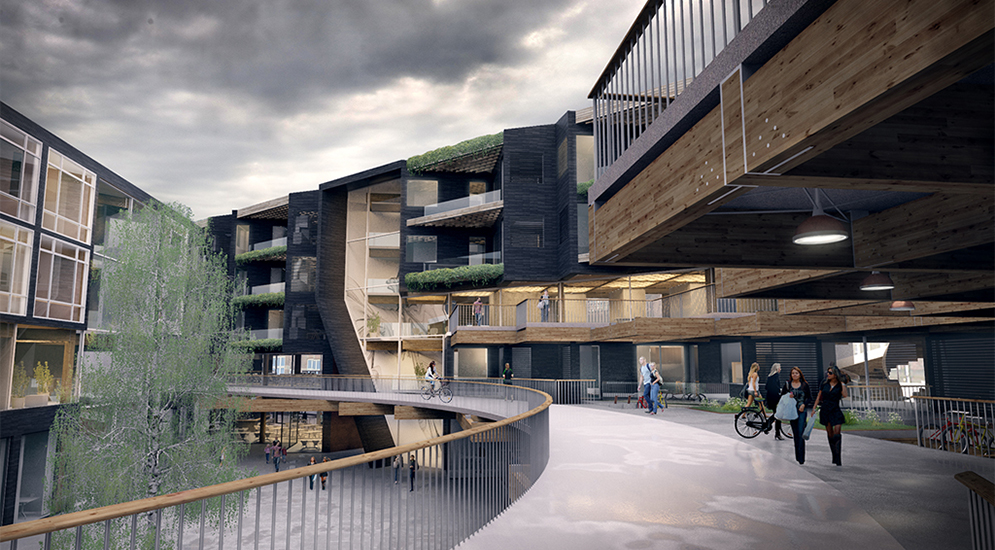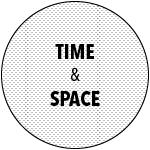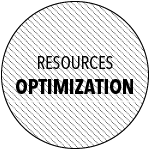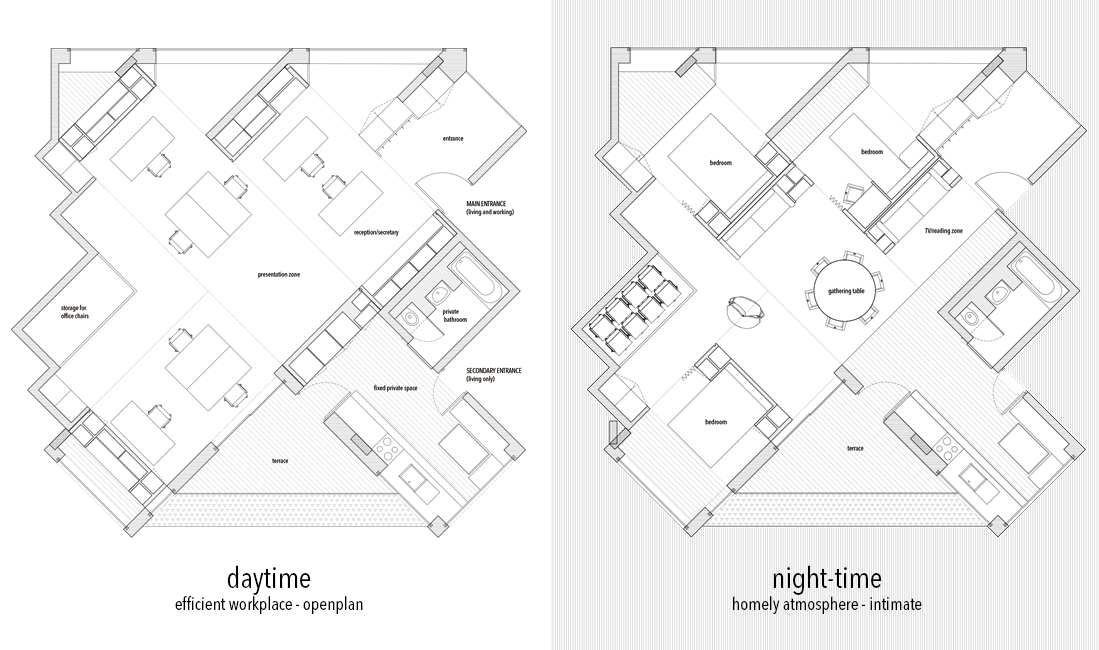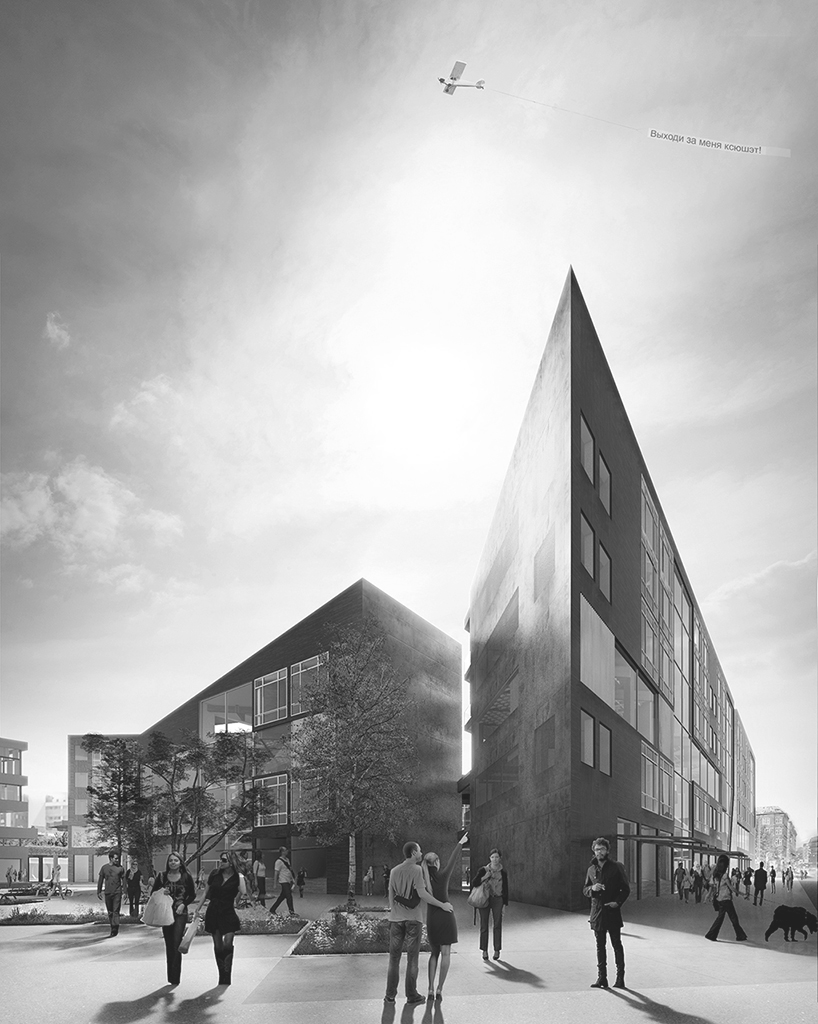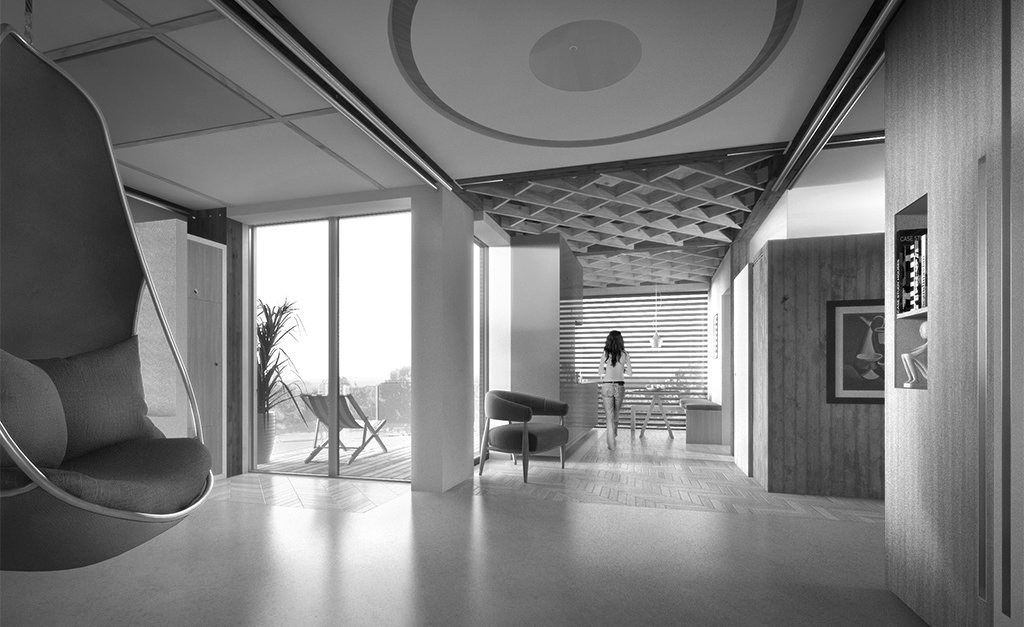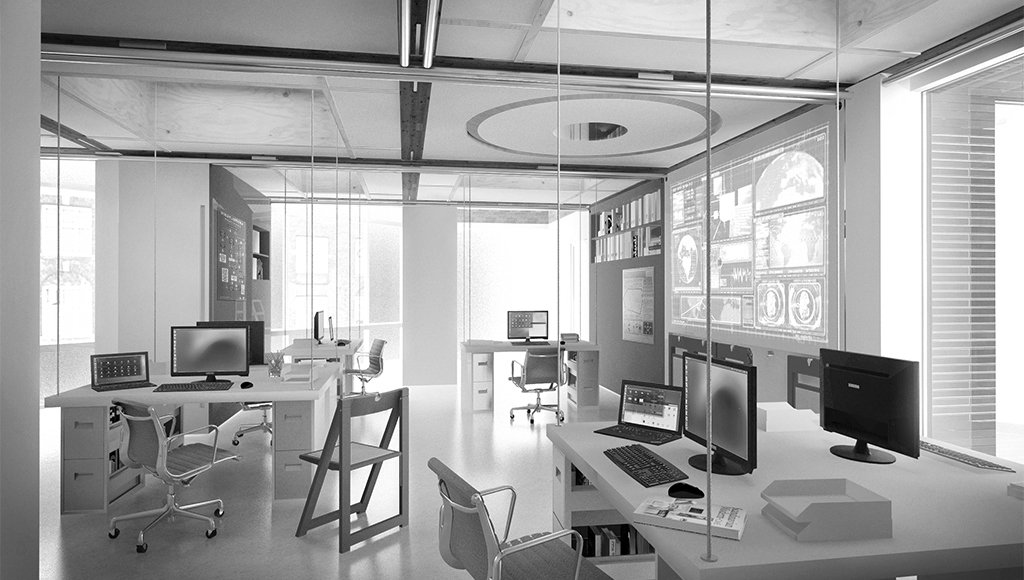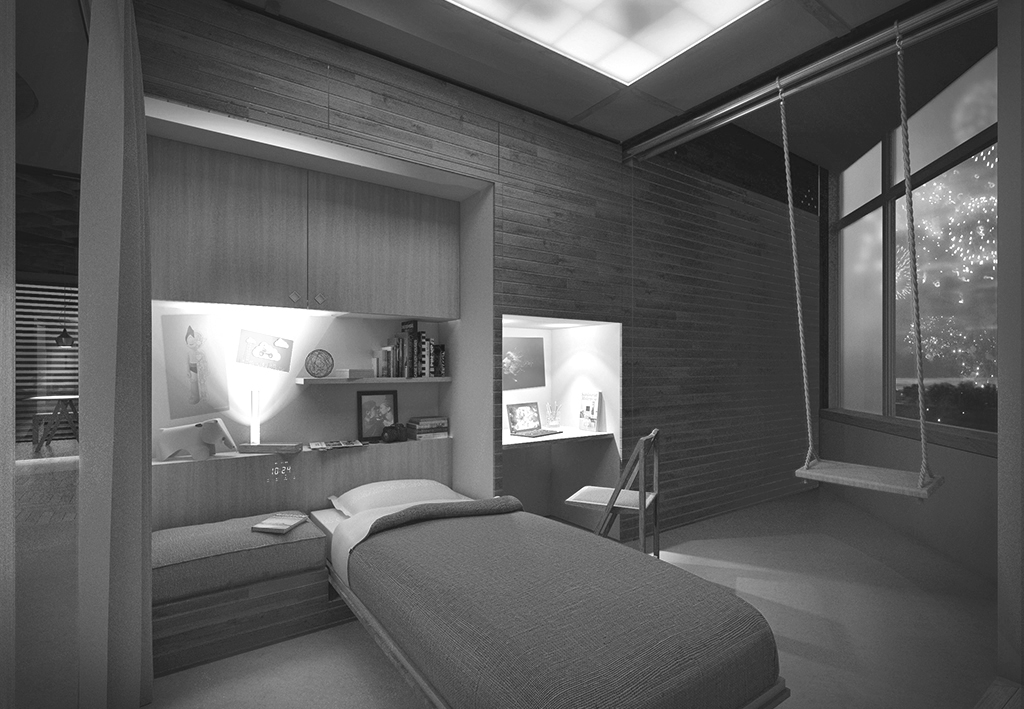Research Subject
Application
The concept is a cycle of space transformations, which occurs as a result of function changes according to a given time interval based on place, people and resources. By focusing on both the well being of the individual and the comfort of the community, the aim of the concept is to promote cooperation and establish a balance between public and private. The sustainable approach of the project highlights the necessity of using resources efficiently. By developing the principle of overlapping functions the project’s ambition and achievement is to decrease the amount of building’s embodied energy and minimize the amount of waste energy, therefore maximizing the potential of both built spaces and used resources.
Based on contemporary recurring problems such as land and energy overconsumption, we have developed an innovative concept of space transformations changing the way people occupy their living and working spaces. A new urban typology where social interaction, economic opportunities and optimal use of resources are at the core of its innovative idea. Horizontal and vertical modules replacing classic walls and ceilings can easily be moved to create high quality living and working spaces.
Consider this:
On regular days, you leave your house in the morning and come back in the evening. In your mind, in contrast to your dynamic lives, your house’s status is somehow frozen in time. It won’t move and when you return, you expect quite logically after all, that it will be there, waiting for you, in the exact same state you left it. Just as if the house’s time frame was suspended during your absence, it is as if it ceased to exist the second you left. The idea is then to take these virtually non-existent lapses of time, fixed for users and their reference frames, and to stretch them in order to introduce more uses. In other words, give them a double identity in a parallel life from their users’ perspective.

Using the complementary patterns of living and working functions, the units are specifically designed in such a way that they contain all necessary elements for both configurations and can be easily switched. The simplicity of the transformation together with the full securing and accessibility of personal belongings ensure a full time occupancy of the spaces. In the morning, when the first tenant lives the unit, the living configuration is being transformed into the working one which brings a completely different space organization, daylight conditions and materiality. At the end of the day, the working configuration shifts back, keeping people from working extra hours thus giving users more time for extra activities. The monthly rent of the unit will decrease, giving users more financial flexibility and freedom rather than paying for a space which stays empty nearly half of the time.
The concept takes its inspiration from a natural process: Metamorphosis. It is a common phenomenon in the biological world characterized by a change of physical conditions, habitat or behavior. Following that, Space Metamorphosis is a cycle of space transformations, which occurs as a result of function changes according to a given time interval based on place, people and resources.
An analysis of space occupation ratios for different primary functions resulted in an average of only 55% occupancy on a yearly basis, meaning that a large amount of valuable square meters are not fully exploited.
By implementing the Space Metamorphosis principle in one specific area of Copenhagen while satisfying the city’s needs, more than a third of built square meters were saved compared to the local plan’s feasibility study. The best part is that by building less, people get more.
